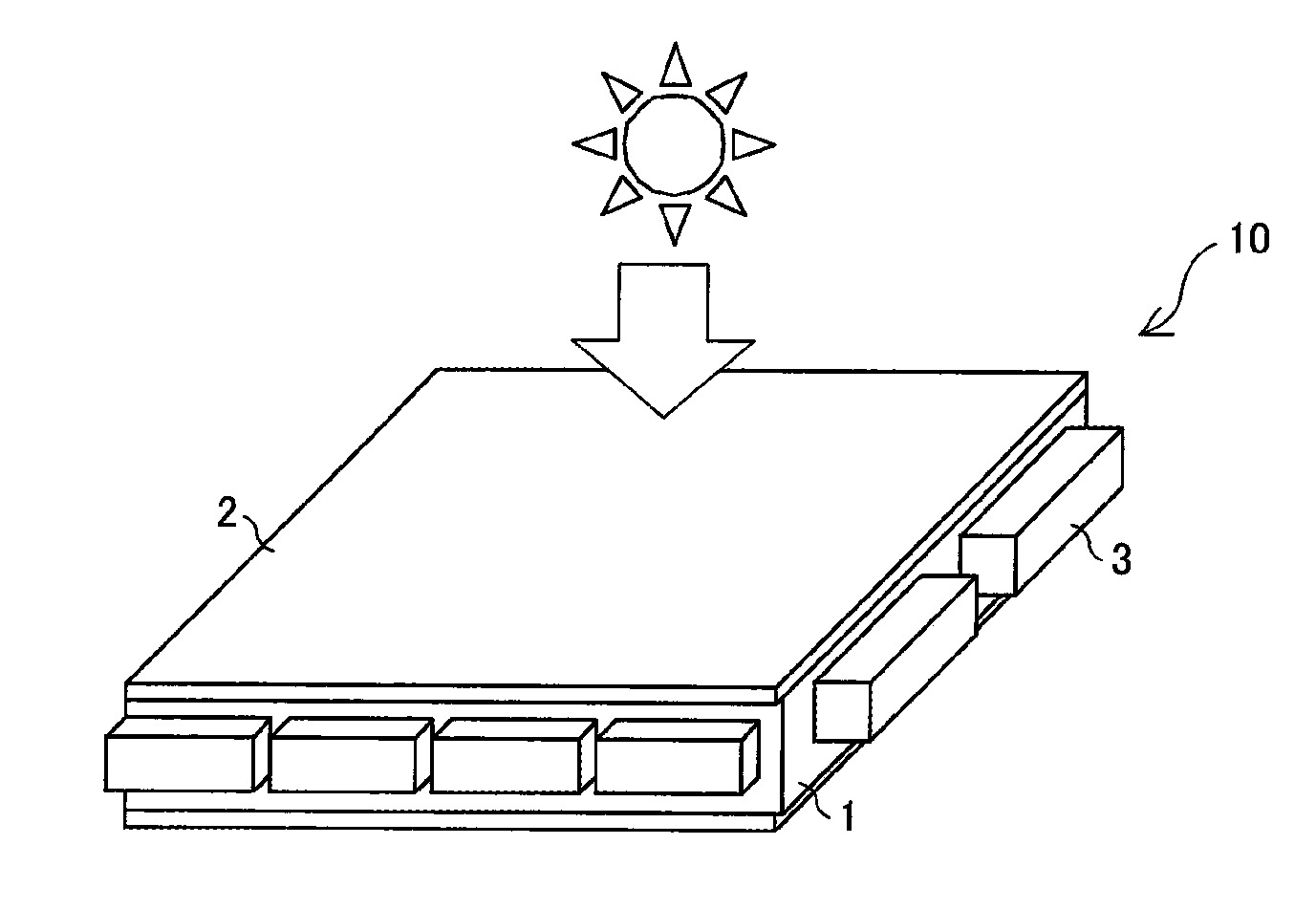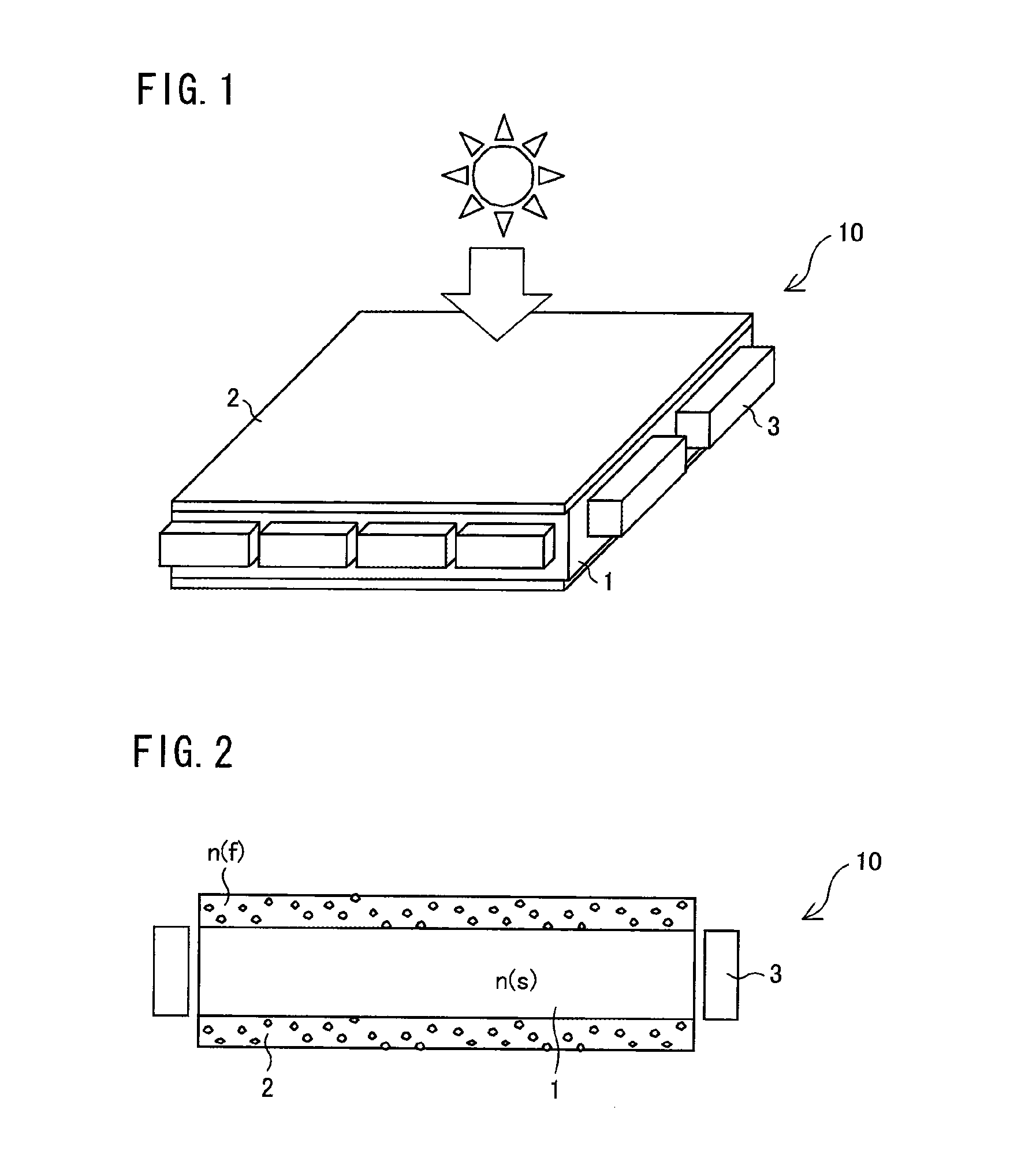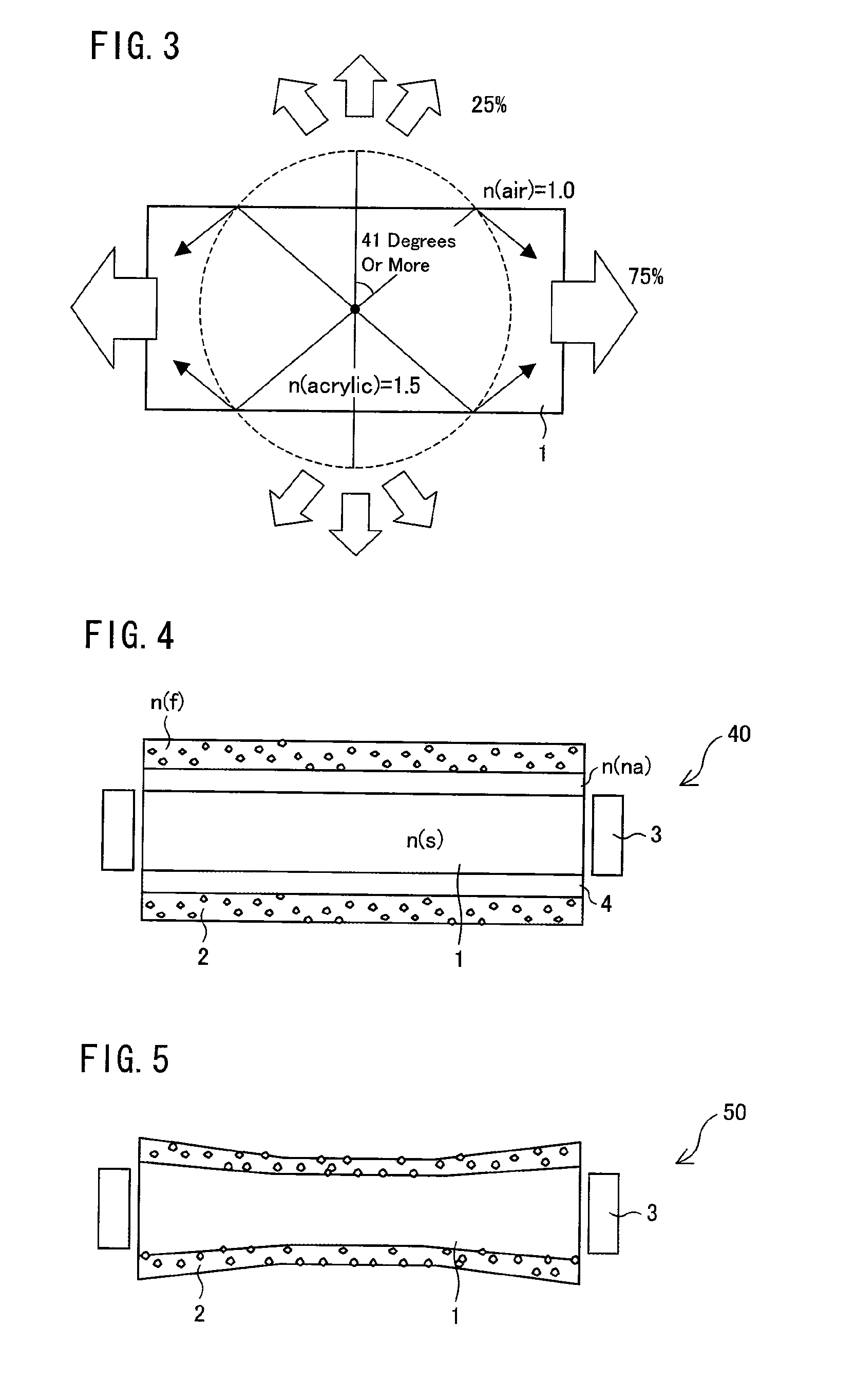Solar cell module and solar photovoltaic system
a solar photovoltaic and solar cell technology, applied in the direction of basic electric elements, electrical equipment, semiconductor devices, etc., can solve the problem that the solar panels cannot be stacked when the solar panels are used, and achieve the effect of low cost, easy manufacturing, and high design freedom
- Summary
- Abstract
- Description
- Claims
- Application Information
AI Technical Summary
Benefits of technology
Problems solved by technology
Method used
Image
Examples
embodiment 1
(Solar Cell Module 10)
[0027]The following describes a solar cell module in accordance with an embodiment of the present invention, with reference to FIGS. 1 through 3. FIG. 1 is a perspective view illustrating a solar cell module 10. FIG. 2 is a cross-sectional view illustrating the solar cell module 10. FIG. 3 is a view for explaining how light is guided in the solar cell module 10.
[0028]The solar cell module 10 includes a light guide plate 1, a fluorescence-dispersed film 2, and solar cell elements 3 (see FIGS. 1 and 2). According to the light guide plate 1, the fluorescence-dispersed film 2 is adhered to an entire daylight surface which sunlight enters. According to the present embodiment, another fluorescence-dispersed film 2 is further adhered to another surface which faces the daylight surface. It follows that the light guide plate 1 is configured to be provided between the two fluorescence-dispersed films 2. Of course, a fluorescence-dispersed film 2 can be merely adhered to ...
embodiment 2
[0041]The following describes a solar cell module in accordance with another embodiment of the present invention, with reference to FIG. 4. A solar cell module 40 of this Embodiment 2 is different from the solar cell module 10 of Embodiment 1 in that the solar cell module 40 further includes an adhesive layer 4 which is provided between a light guide plate 1 and a fluorescence-dispersed film 2 so that the fluorescence-dispersed film 2 is adhered to the light guide plate 1 via the adhesive layer 4 (see FIG. 4). In this Embodiment 2, a description will be merely given to configurations different from those of Embodiment 1, and descriptions regarding the other configurations are omitted.
[0042]According to the solar cell module 40, the adhesive layer 4, the light guide plate 1, and the fluorescence-dispersed film 2 are configured so as to satisfy a relation n(f)≦n(a)≦n(s), where “n(a)” is a refractive index of the adhesive layer 4, “n(s)” is a refractive index of the light guide plate 1...
embodiment 3
[0045]A solar cell module of this Embodiment 3 is different from the solar cell module 40 of Embodiment 2 in that an infrared absorption agent is dispersed in a fluorescence-dispersed film 2. In this Embodiment 3, a description will be merely given to configurations different from those of Embodiment 2, and descriptions regarding the other configurations are omitted.
[0046]Aluminum nitride particles can be used as the infrared absorption agent which is to be dispersed in the fluorescence-dispersed film 2 of the solar cell module in accordance with the present embodiment. Note, however, that the infrared absorption agent is not limited to this. The infrared absorption agent, which is dispersed in the fluorescence-dispersed film 2, absorbs infrared light, which has a wavelength falling within a region Y of a solar energy distribution illustrated in a graph of FIG. 6, so as to prevent the infrared light from passing through the fluorescence-dispersed film 2.
[0047]It is preferable that t...
PUM
 Login to View More
Login to View More Abstract
Description
Claims
Application Information
 Login to View More
Login to View More - R&D
- Intellectual Property
- Life Sciences
- Materials
- Tech Scout
- Unparalleled Data Quality
- Higher Quality Content
- 60% Fewer Hallucinations
Browse by: Latest US Patents, China's latest patents, Technical Efficacy Thesaurus, Application Domain, Technology Topic, Popular Technical Reports.
© 2025 PatSnap. All rights reserved.Legal|Privacy policy|Modern Slavery Act Transparency Statement|Sitemap|About US| Contact US: help@patsnap.com



